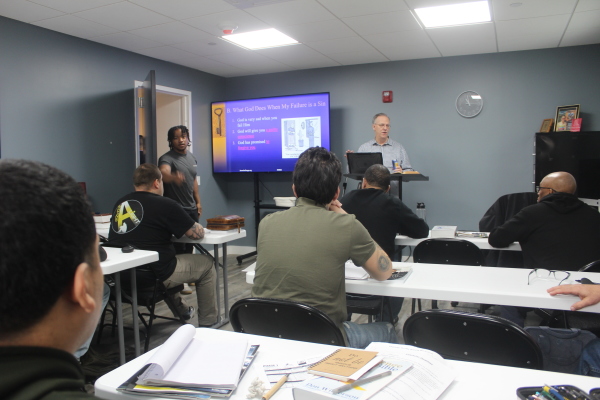Has the ‘lightning’ of revival struck in the United States?

Revival happened in Wales in 1904-1905, beginning with youth. Is it happening now in the United States?
In Wales, Evan Roberts, a coal miner barely out of his teens, had been struck by the lightning, and everyone with whom he came into contact was ignited, “I will never forget the lightning in his voice,” said Alun Morgan of Caerfarchell, an older man who was in contact with Evan in those days.
When the revival volt hit Evan Roberts, a church leader described Evan as “acting like an article of radium … a consuming fire which took away sleep, cleared the channels of tears and sped the wheel of prayer throughout this district.”
W.T. Stead, a skeptical journalist, would write that it seemed like “living energy had invaded Evan’s soul, burst all bonds, and overwhelmed him.”[1]
It happened to Evan during a prayer service on September 29, 1904. During that session, Evan began to sense “an irresistible influence” coming upon him as he listened to Pastor Seth Lloyd pray for God to “bend me!”
In a short time, the humble youth, a gangly former coal miner and blacksmith would be regarded as the leader of the revival.
Meanwhile, the lightning of revival had struck a teen-aged girl in a Calvinist Chapel in West Wales. A historian described Florrie Evans as “one of the highly significant figures” in the revival. During a church service, the pastor asked people to answer the question: What does Jesus mean to you?
Florrie, a new believer, could not be silent. “I love Jesus with all my heart,” she declared. With that, conviction spread audibly and tangibly throughout the room.
From those beginnings, a powerful revival began to spread throughout the country. And it was much needed. Churches had gone cold, and attendance had declined. Immorality and drunkenness were corrupting the society, destroying families and wrenching the beauty and life from Wales, which had been known as a land of inspiring worship music sung by mighty choirs
In 1902, David Howell, a prominent pastor, had written an open letter sounding the alarm.
Wales was headed for a train wreck spiritually, theologically, morally, and culturally. “The authority of the Bible and the foundational truths of Christianity were being judged in the court of reason and criticism,” he lamented. Pulpits were spiritually vacuous and pews deserted.
As Howell described the crises of his time, Roger Cohen, in a New York Times article, wrote decades later about the “unraveling” of our present age: “The fabric of society frayed. Democracy looked quaint and outmoded beside new authoritarianisms … politicians, haunted by their incapacity, played on the fears of their populations. Dystopia was a vogue word… the great rising nations of vast populations held the fate of the world in their hands but hardly seemed to care … until it was too late and people could see the Great Unraveling for what it was and what it has wrought.”
Fruit is proof of genuine revival. Thus, the most important question: What was “wrought” from the Welsh Revival? Consider this:
- Within eight months more than 100,000-150,000 people had joined churches. David Matthews, a revival participant, summed it up: “It is a fact that large numbers have been added to the churches. Not merely converted or restored, or helped on, but to become full members…”
- Matthew continued: “That which costly legislation, cumbersome philanthropic effort, or organizations have failed to do, here the Spirit of God is doing with ease and thoroughness surprising to behold. Drunkards give up drinking without pledge or pressure … quarrels are healed without the courts … Homes made happy … Debts paid without legislation … Streets purified without threat or fine … The quest for holiness became the passion of the man in the street”. Matthews also noted that “every pub in Llanfair in Anglesey was closed.”
- F.B. Meyer wrote: “Judging from the fruits. In the vast multitude who have been truly converted and have joined the churches, and the transformation wrought over wide districts in the country. It is impossible to doubt that there has been a deep and real work by the Spirit of God.”
- Vynrwy Morgan, a critic of Evan Roberts and the revival, later said that “men who had been regarded as either too old or too wicked to be touched and saved, surrendered fully and absolutely, and have since become useful citizens and church members.”
Again, the fruit is the real proof of revival, and the standard of measurement of the revival that may be forming now in America through the students could be a hint of what is to come. So, think now about all those students “calling down lightning” on college campuses in our day.
Is revival on the horizon? We need to join in spirit and soul at least their worship and intercession. It’s either revival or “unraveling.”
And if there is an end to the campus rallies, hopefully, the students will continue “calling down lightning,” worship, and repentance on behalf of themselves, their institutions, and the nation.
Wallace B. Henley is a former pastor, daily newspaper editor, White House and Congressional aide. He served 18 years as a teaching pastor at Houston's Second Baptist Church. Henley is author or co-author of more than 25 books, including God and Churchill, co-authored with Sir Winston Churchill's great grandson, Jonathan Sandys. Henley's latest book is Who will rule the coming 'gods'? The looming spiritual crisis of artificial intelligence.





















